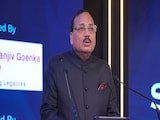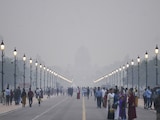In the run-up to the 2024 Lok Sabha elections, the Bharatiya Janata Party (BJP) and the Biju Janata Dal (BJD) held a series of meetings to explore the possibility of reviving their old alliance in Odisha for the forthcoming polls. There were several media reports about Prime Minister Narendra Modi's warm relationship with outgoing Odisha chief minister Naveen Patnaik and about the good relationship between their parties. There was some merit to these stories, as Patnaik's party always supported the Modi government on key issues, whether it was the passage of crucial bills in Parliament or endorsing the BJP's Rajya Sabha nominees. On his part, Modi had described Patnaik as a "close friend" and a "popular chief minister".
Despite this warm start, talks between the BJP and the BJD failed, with both declaring that they would go solo in the simultaneous Lok Sabha and assembly elections.
In Hindsight, BJP Was Perhaps Right
The election results show that the BJP perhaps made a wise decision by not joining forces with the BJD as it has managed to chalk up a historic win in the virgin territory of Odisha all by itself. Not only has the BJP disallowed Patnaik's party from winning even a single seat in the Lok Sabha, it can rightfully claim credit for dethroning one of the country's most popular chief ministers who had the distinction of occupying this post for a record 24 years. More importantly, the BJP has succeeded in expanding its footprint in the country's Eastern belt as part of its ongoing efforts to stretch itself beyond the Hindi heartland.
As the BJP prepares to form its first government in Odisha, the party's state unit has every reason to pat itself on the back. The local party leaders and cadres had been working hard to channel the growing disenchantment with the Patnaik government in its favour, even as its central leadership had invariably stopped them from going too far as it needed Patnaik's unconditional support in Delhi. However, the state unit then made a strong case against aligning with the BJD when its central leaders were negotiating an alliance with Patnaik in March. It convinced its top leaders that any alignment with Patnaik would demoralise BJP workers and could open up the opposition space for the Congress.
When the two parties announced they would not go together, the forthcoming electoral battle was initially viewed as a "friendly fight" as there was a perception that the BJP and BJD would join hands after the elections. However, the BJP soon realised that Patnaik was not as invincible as it had believed him to be and that it had a good shot at improving its tally in this coastal state. The formation of a BJP government in Odisha is the proverbial cherry on the cake.
The Discontent Over Pandian
The BJP succeeded in this mission by designing and executing a highly successful campaign around the growing public discontent over the unbridled clout of Patnaik's former secretary, the Tamil-born V.K.Pandian. The official was increasingly being seen as Patnaik's successor, particularly after he resigned from his government post and joined the BJD.
As it is, there was simmering resentment in the BJD about an 'outsider's' undue influence over the Chief Minister. This anger boiled over when Pandian virtually took over party affairs and the management of the election campaign. Odia pride or "Odia asmita" consequently became a hot-button issue in these elections, which was successfully exploited by the BJP. In an election speech, Prime Minister Narendra Modi even spoke of the 'missing keys' of the Ratna Bhandar of the Lord Jagannath Temple reaching Tamil Nadu - a clear reference to Pandian.
Though Patnaik had always been a distant figure and his interactions with the public were few and far between, he managed to retain a certain mystique. But perhaps it's this very mystique that over the years turned into a visible 'disconnect' with the people of the state and his party, and it further came into sharp focus after Pandian's ascendency in the BJD.
Revered by the people of Odisha, Patnaik gradually lost his sway over the electorate. His welfare schemes, which propelled him to victory in the past, lost their appeal and were now being increasingly credited to the Prime Minister. Questions were also being raised about Patnaik's inability to bring industrial progress to the state, something that would have provided much-needed employment for the locals and boosted the state's economy.
No Escaping Age
Then there was this incessant chatter over 77-year-old Patnaik's health. Though this has been a subject of considerable speculation for the past several years, Patnaik's dependence on Pandian triggered panic among BJD cadres as well as the electorate about the party's future. Realising that this could become a strong electoral issue, Modi declared at an election rally that when it came back to power, the BJP would set up a committee to investigate the reasons for Patnaik's deteriorating health. Patnaik, in turn, did make belated efforts for course-correction, but it was a matter of too little, too late.
While an understandably upbeat BJP prepares for a fresh beginning in what is new territory for it, the curtain has come down on a once-popular chief minister who decades ago had bid goodbye to his jet-setting life abroad and chosen to pursue a political career in faraway Odisha. Naveen Patnaik may have been shown the door by the people today, but there is no denying that he has left an indelible mark on the history of the state.
(The author is a senior Delhi-based journalist)
Disclaimer: These are the personal opinions of the author















